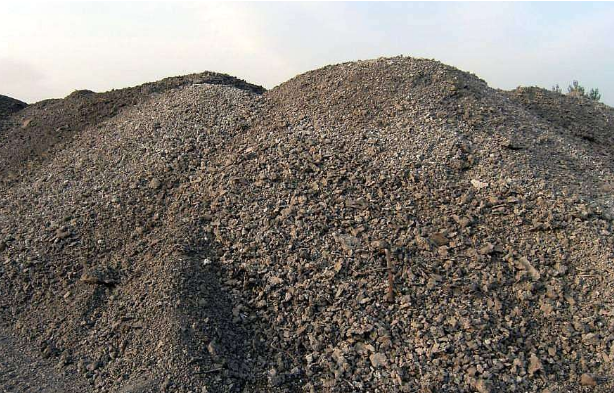Physical properties and chemical composition of steel slag

Steel slag is an aggregate composed of various minerals and glassy substances. Due to different chemical components and cooling conditions, the appearance and color of steel slag vary greatly. The steel slag with lower alkalinity is gray, and the steel slag with higher alkalinity is brown gray or off-white. The slag is loose and not bonded, and the texture is hard and dense with less pores. The slag lump and slag crust are finely crystallized, well-defined and neatly fractured. Naturally cooled steel slag will expand and weather after being piled for a period of time, and become lumpy and powdery.
The moisture content of steel slag, the method of slag stewing and cooling conditions determine the diversity of steel slag properties and its various ways of utilization. The moisture content of steel slag is usually 3~8%. Open hearth furnace steel slag has slightly smaller specific gravity, slightly more pores, and better stability. The steel slag after steel slag utilization treatment is generally gray-black, hard and dense, and it is light white when the alkali content is high. Since steel slag has a higher iron content, it has a higher density than blast furnace slag, generally 3.1~3.6 g/cm3. The bulk density of steel slag is not only affected by its density, but also related to the particle size. The slag powder passed through the 80-mesh standard sieve is 2.17~2.2 g/cm3 for open hearth furnace slag, about 1.62 g/cm3 for electric furnace slag, and about 1.74 g/cm3 for converter slag. Since steel slag is dense and contains more iron, it is more wear-resistant. Grindability index: standard sand is 1, blast furnace slag is 0.96, and steel slag is 0.7. Steel slag is more wear-resistant than blast furnace slag.
The main chemical composition of steel slag is basically similar to that of Portland cement clinker and blast furnace slag. The content of crushed steel slag varies according to the furnace type and smelting steel type. The chemical composition is mainly CaO, SiO2, MgO, Fe2O3, MnO , Al2O3 and P2O5 etc. In addition, steel slag also contains a small amount of other oxides and sulfides, such as TiO2, V2O5, CaS and FeS. CaO is one of the main components of steel slag. The content of SiO2 determines the amount of calcium silicate minerals in steel slag. Al2O3 is also the main component that determines the activity of steel slag. In steel slag, calcium aluminate or calcium aluminosilicate glass is generally formed, which is beneficial to the activity of steel slag. There are three main forms of MgO: combined state (calcium forsterite, magnesium rhodonite, etc.), solid solution (infinite solid solution of divalent metal oxides MgO, FeO, MnO, namely RO phase) and free state (pericclase crystal). Magnesium oxide in a compound state will not affect the long-term stability of steel slag cement. When the P2O5 content is low, it can promote the formation of silicate minerals; when the P2O5 content is too high, it will react with calcium oxide and silicon oxide to form sodium Geschmidite (7CaOP2O5-2SiO2), which hinders the gelling minerals C3S and C2S and so on.
The relationship between mineral composition of steel slag and Portland cement clinker. The mineral phase of steel slag is mainly C3S and C2S, followed by RO phase, which is a complete solid solution composed of MgO, FeO, MnO and f-CaO. Mineral composition mainly depends on its chemical composition, especially affected by the alkalinity R. Because steel slag contains a large amount of minerals such as C3S and C2S, it has good gelling property, which creates good conditions for the comprehensive utilization of steel slag in cement and concrete.
